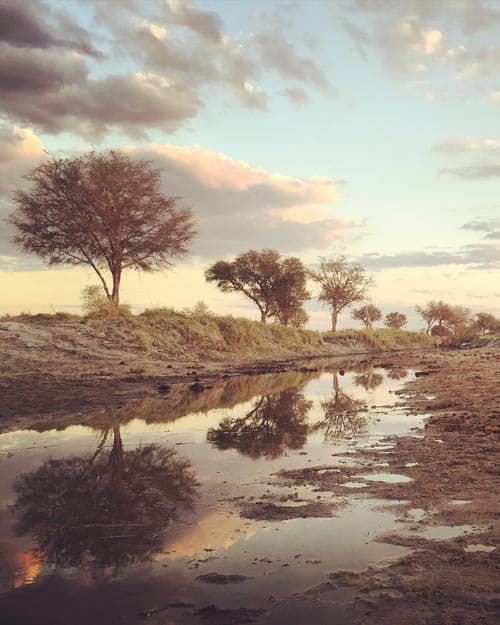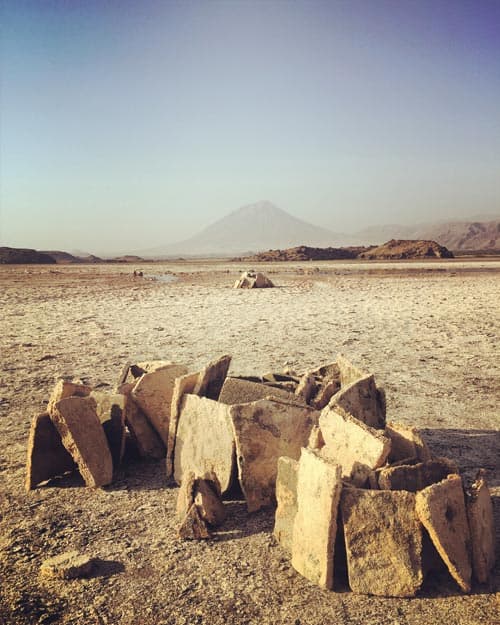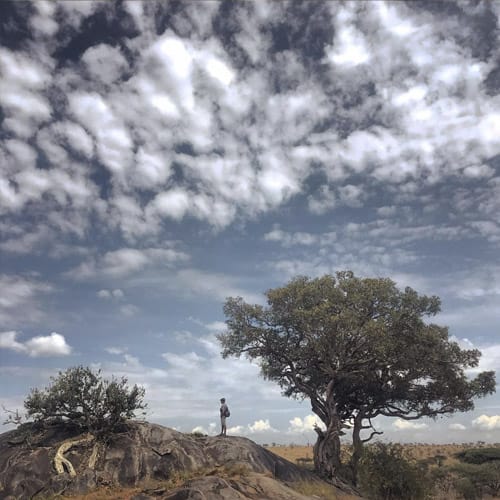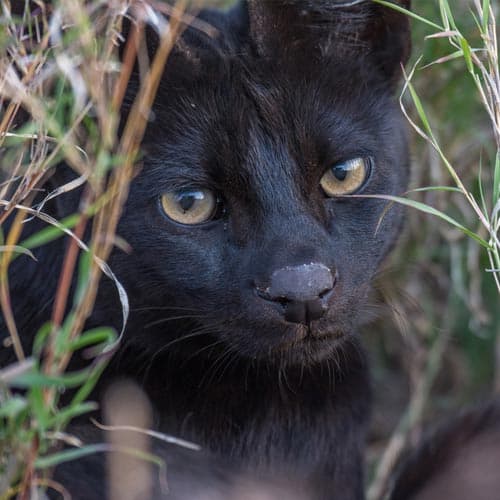

NO FRILLS ON FOOT ADVENTURE WITH ETHAN KINSEY
“[We] are interested in something that is a lot less comfortable, and involves a lot more hiking and camping…” was all I needed to put this itinerary together. Every guide I know of a certain personality and calibre will agree that being on foot is the ultimate way to experience wilderness. Wind direction and strength, the angle of the sun, the ability to interpret a bird’s call all become significant. In essence, it is also the test of a guide’s skill and guests’ discipline, because a small mistake usually means a cloud of dust and the screech of some tick-birds, followed by a few minutes looking at tracks on the ground and saying “A …. was here before it smelled/heard/saw us”.


In pursuit of wilderness we headed to some waterholes in an area only frequented by a small group of guides in the know: a secret that’s existence relies on few people visiting. The first lesson in discipline came when a mother cheetah with four cubs came down to drink at the water. The excitement of the moment and gasps of awe gave away our presence and they quickly slunk away. It was a lesson that helped us into a beautiful sighting on the edge of another waterhole. The sun was high in the sky, and we’d covered 2 miles, very slowly, as we began an approach of a second waterhole. The heat was beginning to send the wind swirling as we quietly made our way around the Gardenia bushes. I could hear a flock of Vulturine guineafowl, a beautiful bird, beyond the bushes. We couldn’t scare them or they would warn everything around that we were there. A warthog trotted toward the water then turned to look at us; we all froze. As he approached a little closer, we remained motionless, barely breathing. A gap in the bushes allowed us to crawl into the view of the waterhole and we sat watching as the guineafowl took their turn drinking alongside the warthogs. An elephant came down, and we sat in silence as another and then another joined. After enjoying the elephants for a few minutes, we decided to retreat. It was quite thrilling knowing that they never knew we were there.


Arriving back to camp from beautiful afternoon walk along the Tarangire river. What you can’t see in the photo is that there were fresh lion tracks on top of our tracks from only an hour and a half earlier.
Lake Natron was next on the list, and we arrived hot and dusty to some cold beers and a dip in the natural pool of alkaline water, complete with white lipped tilapia that nibbled from between our toes. The Natron environment is really unique and I have written about it before …. One of the best ways to appreciate the landscape is from the air, so I organized for a friend, Zac Peterson, to fly in with his ultra-light airplane. Here are some images captured from the plane…
The next three days of the safari were spent walking in Serengeti National Park. Only a couple of kilometers after leaving the corrugated main road, we left behind the vehicle tracks and headed out cross-country to our first campsite of the trip. You know you are going to a remote camp when there is not even a vehicle track to get there. From then on, we would be on foot: camp would move about 5-8 km every morning while we walked following a tributary of the Grumeti river, arriving around noon in time for a cold beer and lunch.


We’d head off in the morning, reading tracks and signs and discerning what had happened overnight: fresh lion spoor – probably the ones we heard roaring at night, a leopard track, elephant coming down to drink at night, civet… the list goes on. By 10 a.m. it would be getting warm and we’d start to intercept animals coming down to drink. The entire walk teemed with game: giraffe, zebra, wildebeest, topi, hartebeest, eland, buffalo, impala, baboon, vervet monkeys. Wildlife would come by camp, and on the second day after lunch we found a beautiful lion and two lioness feeding on two young buffalo calves they’d killed. We decided to approach by vehicle so as not to disturb their lunch. At the last camp, at least 50 elephant came by while we were having lunch. Afternoon typically consisted of a shorter stroll arriving back in camp to watch the sun go down, have a hot shower, and enjoy a cold Gin-tonic, Kentucky mule, or beer by the fire.
Facebook
Instagram
Twitter
Youtube




All about Rüppell and the Vulture named after him

No frills on foot adventure with Ethan Kinsey






